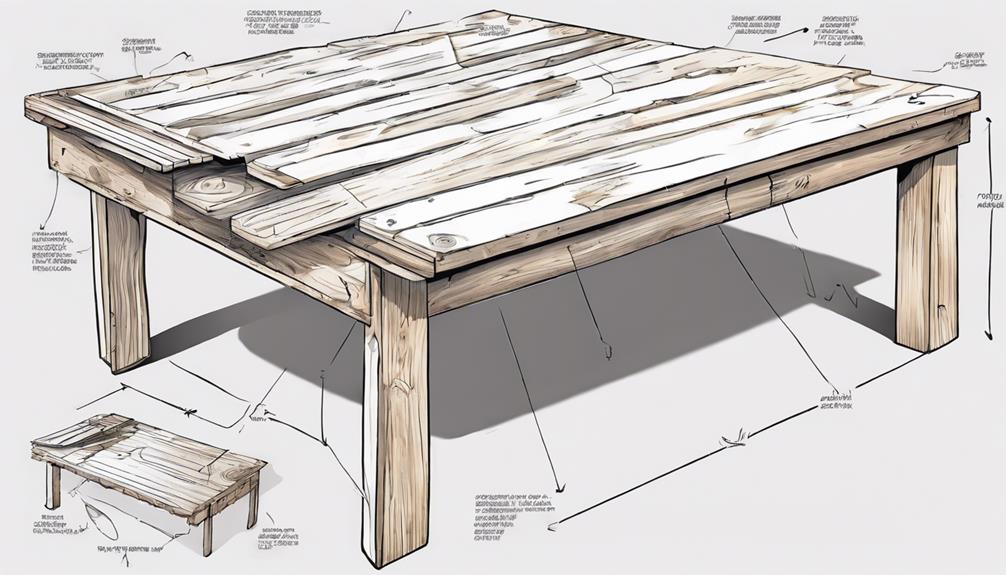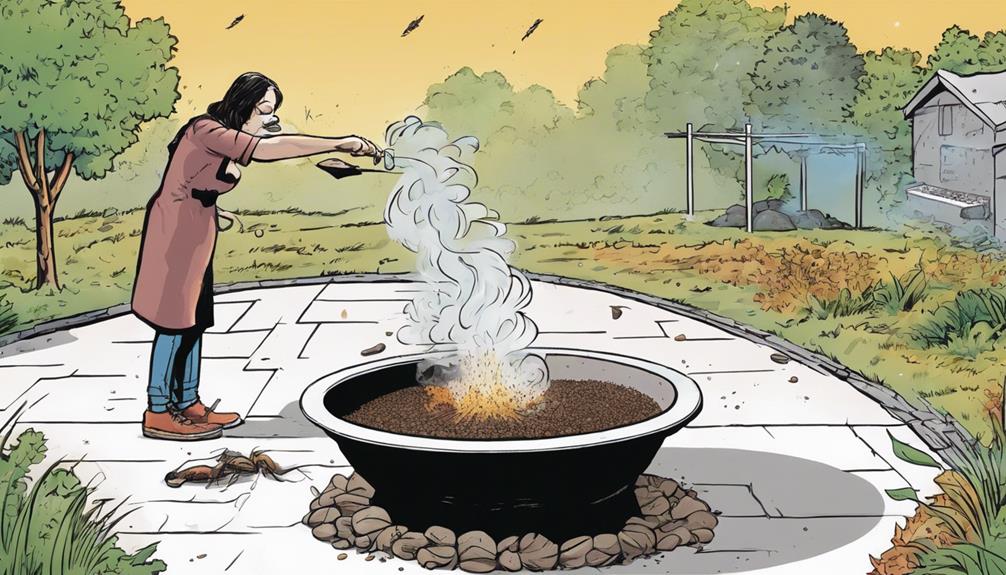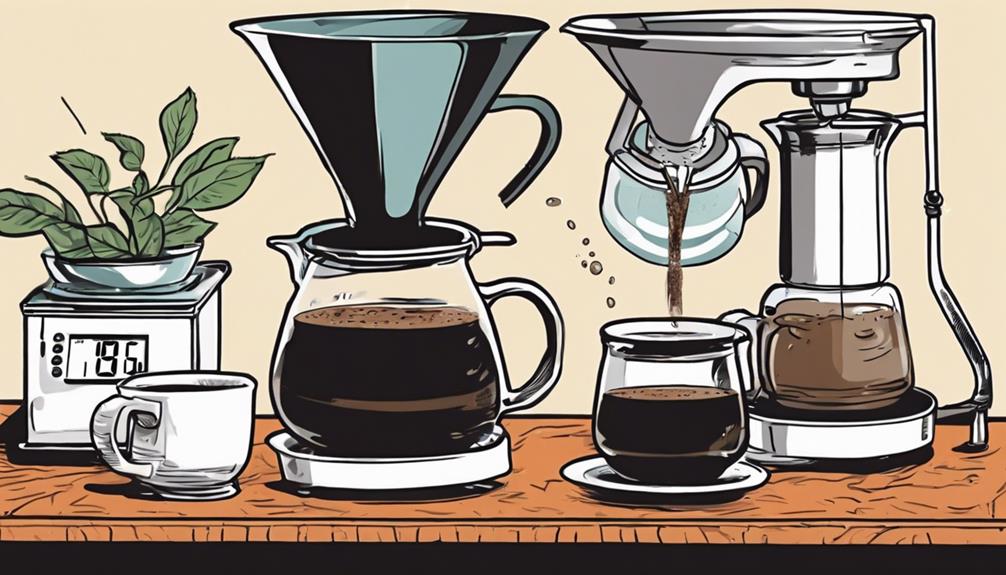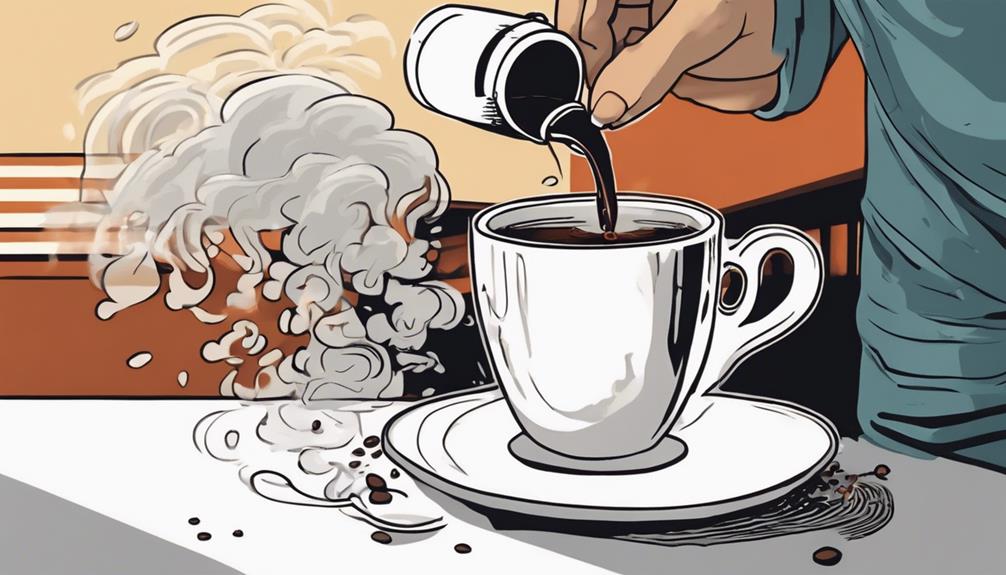Want to create a unique coffee table from pallet wood? Start by taking apart pallets and reusing the top boards. Build a strong base with leftover 2x4s and secure them with a nail gun. Customize the size to fit your space. Add a rustic touch by charring the wood, sanding it down, and applying a protective finish. Create sturdy legs using 4×4 pieces and attach them securely. Elevate the look with metal details. Remember to wear safety gear and work in a well-ventilated area when charring the wood. Dive into our detailed guide to craft your one-of-a-kind piece of furniture. Beginners will benefit greatly from this fun and creative project.
Key Takeaways
- Disassemble pallets, salvage wood, and construct a sturdy base.
- Torch wood for a rustic look and sand for a smooth finish.
- Select and attach 18-20 inch 4×4 legs securely.
- Apply protective finish, metal accents, and experiment with designs.
- Prioritize safety gear, ventilation for torching, and fire extinguisher readiness.
Disassembling the Pallets
To begin constructing your coffee table from pallet wood, make certain to carefully disassemble the pallets by separating the top boards from the rest of the structure. The first step involves prying the pallets apart to salvage the usable wood. Using a hammer, pry bar, or nail puller, remove any nails from the top pieces to guarantee a clean surface for your coffee table project.
After separating the top boards, gather scrap 2×4 pieces to create a sturdy base for the table. This base will provide the necessary stability and support for your coffee table. When assembling, use a brad nailer to securely attach the top boards to the base, creating a solid foundation for the table.
As you progress with the project, remember to trim any excess wood from the pallets using a circular saw. This step will allow you to achieve the desired size and shape for your coffee table.
Finishing the Top
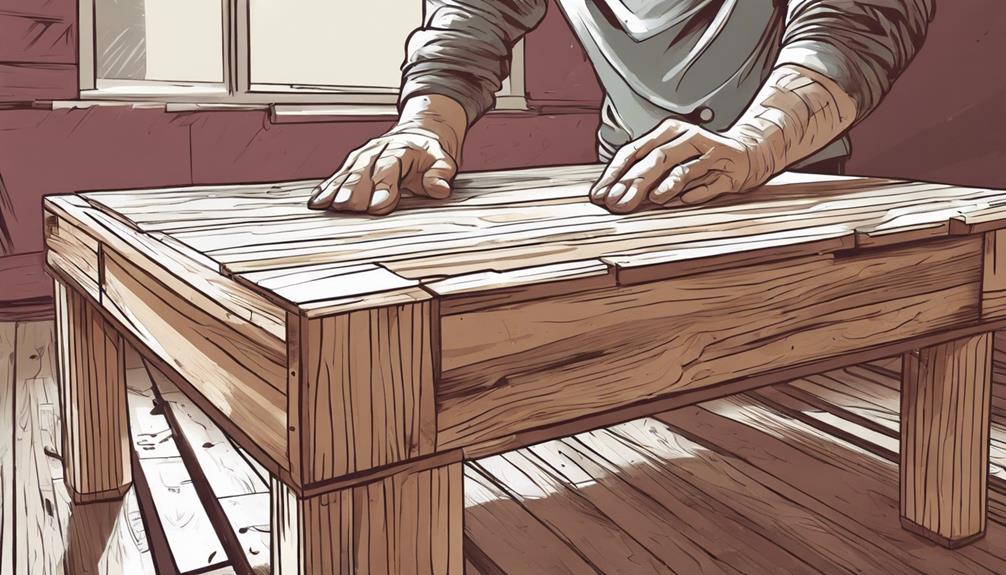
Skirt the edges of the pallet wood coffee table top with remaining pieces to add a polished finishing touch. This step will give your table a clean and cohesive appearance.
Consider torching the wood surface for a rustic look that adds character. By lightly burning the wood, you can enhance the depth and texture of the grain, creating a unique and artistic finish.
After torching, make sure to sand the pallet wood surface thoroughly. This step is essential to achieving a smooth and visually appealing finish. Utilize an orbital sander to darken the wood, enhancing the overall aesthetic appeal of the coffee table.
The dark finish won't only look great but also provide a protective layer. By following these steps, you can transform your pallet wood into a stunning coffee table that will be a focal point in any room.
Creating the Legs
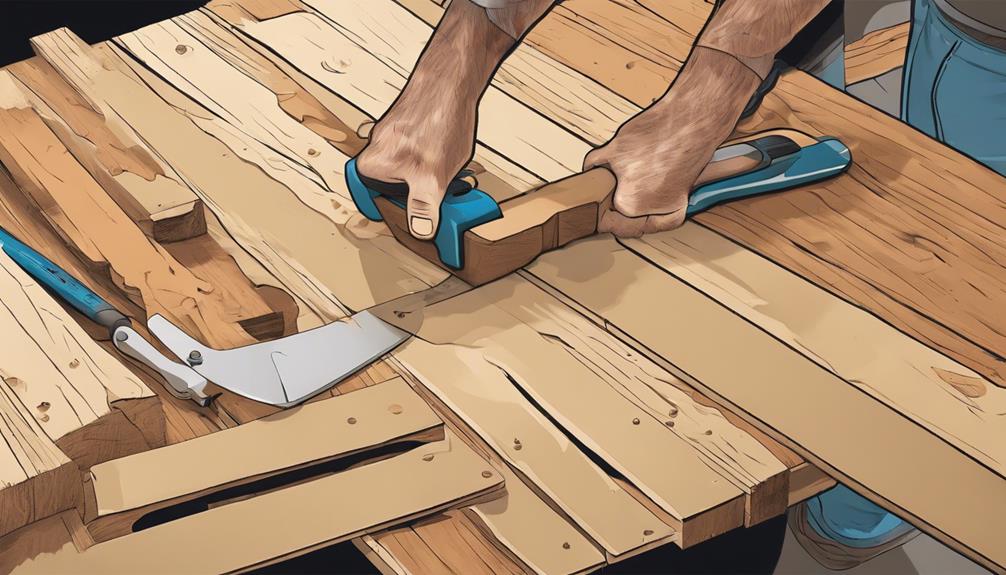
To create the legs for your coffee table, you'll need to carefully select sturdy 4×4 pieces of wood for stability.
Adjust the legs to your desired height, typically between 18-20 inches, for comfort and functionality.
When attaching the legs to the table base, consider various techniques to securely support the weight of the table and any items placed on top.
Leg Material Selection
Consider using robust 4×4 pieces of wood for the legs when crafting your coffee table from pallet wood to ensure stability and resilience. This choice of material guarantees that the legs can support the weight of the table and endure regular use without wobbling or breaking.
Trimming the legs to a height between 18 to 20 inches will offer the ideal proportions for your coffee table, allowing for comfortable use while seated on a standard couch or chair.
To enhance the visual appeal of your coffee table, you may want to torch the legs to create a textured and rustic look that complements the pallet wood top.
Once you have selected and prepared the legs, firmly attach them to the table frame to establish a sturdy and dependable foundation. For an added touch of industrial style, consider incorporating metal fasteners or brackets, which can both enhance the overall aesthetic and provide additional structural support to your coffee table.
Leg Height Adjustment
Crafting the legs for your coffee table involves cutting 4×4 wood pieces to a height between 18 to 20 inches for best comfort and stability. This height range guarantees that your table isn't too low or too high, making it ideal for both lounging and working purposes.
Once you have decided on the height, consider torching the legs to give them a textured and rustic appearance that complements the pallet wood top of the table beautifully.
To make sure that the legs can adequately support the weight of the table, it's important to securely attach them to the table base. You can explore using industrial-style fasteners or accents to add a unique and personalized touch to the legs, enhancing the overall aesthetic appeal of your coffee table.
Leg Attachment Techniques
Fasten the legs securely to the coffee table base using appropriate hardware to guarantee stability and support for the tabletop. Opt for 4×4 pieces of wood to maintain a sturdy foundation. Cut the legs to a height between 18-20 inches for balanced proportions. To enhance the rustic aesthetic, torch the legs for a textured finish that complements the pallet wood tabletop.
When securing the legs, choose hardware that can withstand the weight of the tabletop. Consider industrial-style fasteners or brackets to not only reinforce the attachment but also add a unique design element to the coffee table. Verify that the attachment is secure to prevent any wobbling or instability.
Final Assembly
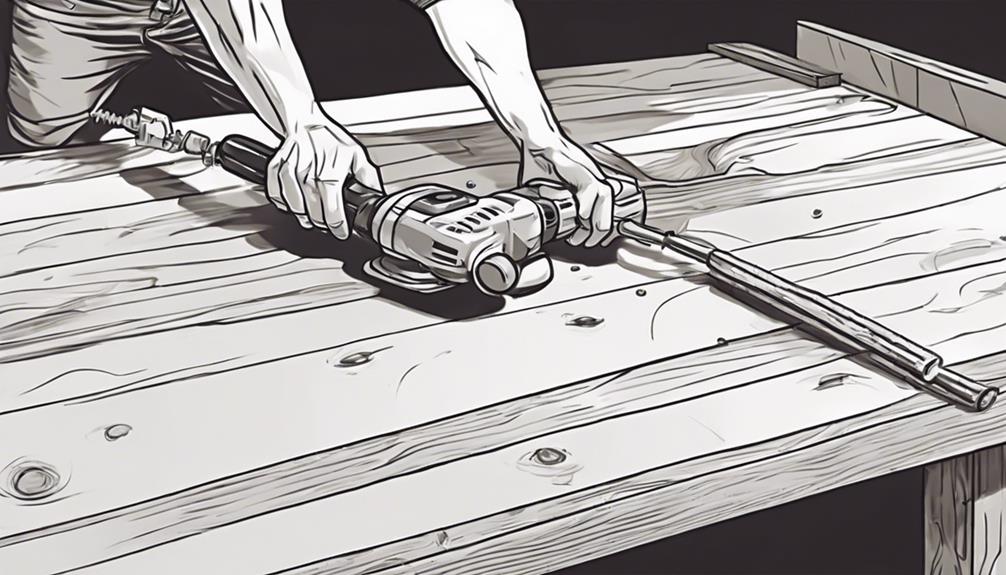
Securely attaching the legs to the table is essential for providing stability and durability in the final assembly of your pallet wood coffee table. Once the legs are firmly fixed, you can move on to the finishing touches that will make your creation stand out.
Here are some steps to contemplate for the final assembly:
- Protective Coat: Apply a clear coat to your coffee table to safeguard it from everyday wear and tear while also giving it a sleek, glossy appearance.
- Enhance Wood Grain: Bring out the natural beauty of the wood by treating it with a suitable finishing product that enriches the grain patterns.
- Metal Accents: For an industrial and rustic look, ponder incorporating metal accents or fasteners into the design, adding an extra touch of character to your table.
- Share Your Creation: Be proud of your unique pallet wood coffee table and share your DIY journey with others to inspire creativity and showcase your skills.
Additional Tips

For additional tips to enhance the appearance and resilience of your pallet wood coffee table, consider experimenting with different finishes such as stains, paints, or varnishes. These finishes not only safeguard the wood but also allow you to achieve the desired aesthetic for your table. Personalizing the design is another way to make your coffee table stand out.
Add unique touches like metal accents, decorative hardware, or a custom inlay to give it a personalized touch that reflects your style.
When it comes to assembly, consider using alternative methods like wood glue, dowels, or screws to guarantee your coffee table is sturdy and long-lasting.
Enjoy the process of creating furniture from pallet wood as a rewarding DIY project that showcases your creativity and woodworking skills.
Share your results and experiences with others on social media, DIY forums, or at home gatherings to inspire fellow DIY enthusiasts to engage in their own pallet wood projects.
Tools and Materials Needed
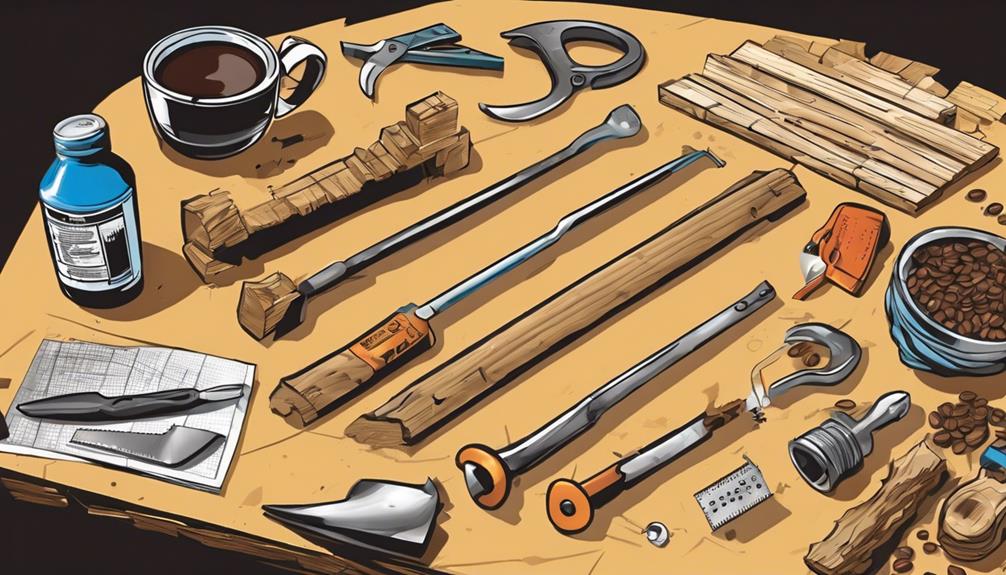
Gather the necessary tools and materials to begin constructing your pallet wood coffee table. Here's what you'll need: Gather the necessary tools and materials to begin constructing your pallet wood coffee table. Here’s what you’ll need: a pallet, saw, sander, wood glue, nails, hammer, and a level. Consider a round coffee table design to give your space a stylish and modern look. This design not only adds a unique touch to the room but also provides a functional and visually appealing piece of furniture.
- Tools:
- Circular saw
- Brad nailer
- Torch
- Orbital sander
- Clear coat
- Materials:
- Pallet wood
- Scrap 2×4 pieces
- 4×4 pieces for legs
- Industrial-style fasteners
To trim the excess wood from the pallet pieces, you'll use the circular saw. The brad nailer will come in handy for securing the different parts together.
If you want to add a rustic texture to the legs and top of the table, the torch will be your go-to tool.
Once the construction is complete, applying the clear coat won't only protect your coffee table but also give it a glossy finish.
With these tools and materials at your disposal, you'll be all set to start creating your own unique pallet wood coffee table.
Safety Precautions

Make sure to always wear safety goggles and gloves when using power tools to keep your eyes and hands protected.
It's essential to use a dust mask during sanding and cutting to safeguard against inhaling harmful particles.
Remember to maintain proper ventilation when working with torches or finishes to steer clear of fume exposure.
Safety Gear Importance
Prioritize your safety by ensuring you have the necessary gear when working with pallet wood, including gloves, safety glasses, and a dust mask. Here are some key safety gear items to keep in mind:
- Gloves: Protect your hands from splinters, cuts, and rough surfaces while handling pallet wood.
- Safety Glasses: Shield your eyes from flying debris, dust, and potential eye injuries caused by tools or wood particles.
- Dust Mask: Prevent inhalation of wood dust, which can irritate your respiratory system and cause health issues.
- Closed-Toe Shoes: Wear sturdy footwear to safeguard your feet from falling objects, sharp nails, or tools.
Hazard Identification Tips
Inspect pallets thoroughly before starting your project to identify any potential hazards such as nails, splinters, or damage that could lead to accidents during the woodworking process.
Wear gloves, goggles, and a mask to protect yourself from splinters, dust, and eye injuries.
Before dismantling the pallets, check for nails, splinters, and damage to avoid accidents.
Use a sturdy work surface and clamps to secure wood pieces while cutting, torching, or assembling to prevent slipping or injuries.
Verify tools like saws, nailers, and torches are in good working condition to minimize the risk of accidents or malfunctions during the project.
When torching wood, work in a well-ventilated area to prevent harmful fumes, and keep a fire extinguisher nearby as a precaution.
Inspiration and Ideas

Explore a variety of design inspirations for your pallet wood coffee table, from rustic to modern styles, to kickstart your creative process. Here are some ideas to get you inspired:
- Rustic Charm: Embrace the natural look of pallet wood by keeping the design simple with a distressed finish and visible wood grains.
- Industrial Edge: Incorporate metal accents, such as hairpin legs or industrial piping, to give your coffee table a modern industrial vibe.
- Hidden Gems: Consider adding hidden compartments or built-in storage solutions to maximize functionality without compromising style.
- Personal Touch: Infuse your personality into the design by customizing the table with engravings, a splash of color, or other unique details.
Frequently Asked Questions
Can You Make a Table From Pallets?
Yes, you can create a table from pallets by disassembling them, using scrap wood for the base, and brad nailing the top. Customize the legs with torched 4x4s, secure them well, and add industrial-style fasteners for flair.
Can You Make Furniture Out of Pallet Wood?
Yes, you can make furniture from pallet wood. It's a popular choice for DIY projects due to its charm, affordability, and sustainability. Repurpose pallets to create unique pieces that match your style and decor perfectly.
How Do You Make a Pallet Bed Step by Step?
To make a pallet bed, gather pallets, disassemble them, cut wood, sand for smoothness, assemble with screws or nails, and finish with a clear coat or paint. Confirm dimensions fit your mattress for a sturdy frame.
How Do You Prepare Pallet Wood for Projects?
When prepping pallet wood for projects, start by gently separating the pallets and removing nails to salvage usable wood. Secure scrap 2x4s for stability, use a brad nailer for assembly, and trim with a circular saw for the perfect piece.
Conclusion
Now that you've tackled this pallet project and built your own unique coffee table, sit back and enjoy the fruits of your labor.
Remember, every piece of wood has a story to tell, just like the memories you'll create around your new table.
Let your creativity flow as you continue to repurpose and craft with pallet wood.
The possibilities are endless, just like the grains in the wood itself.
Happy building!
